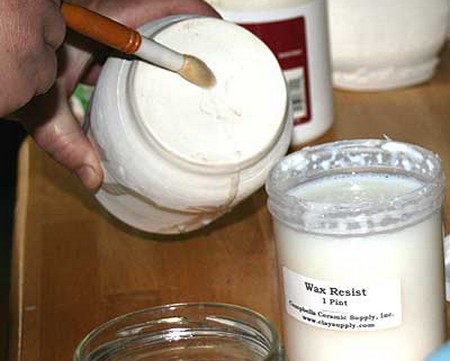Grain filler is not necessary if you are applying wax; the wax itself does the job most efficiently. To avoid many applications and an unnecessary amount of absorption, you can seal the surface first with a thin coat or two of shellac; rub it down with wire wool or fine garnet between coats. You can also increase protection deep in the fibres against heat and water by applying a warmed, thinned mix first. Melt 50/50 wax and white spirit in a can in a pan of hot water, stirring it to a thick liquid, and brush it in hard with a shoebrush. You might have to reheat it to keep it runny. Wipe off the residue, and when it has set, cut it back with wire wool, then apply full-strength, normal temperature coats with a soft rag. They will buff up easily.

It is usual to apply wax with a rag; wipe it on, leave it for a few minutes to ‘go off’, and buff. The main point is not to get lumps in the rag or on the surface, which will smear, and which can be avoided by making sure the wax is soft enough and warm enough to spread easily. Put on as many coats as it takes to bring up a deep shine, and expect to rewax a surface regularly. Once or twice a year, depending on how often you wax, you should clean as much off as you can with white spirit and start the build-up process again.
For pieces that get harder use, wax can be used as a ‘disposable protection’ skin over a clear finish. It gives a softness to an otherwise hard brilliance, and when applied with wire wool has the added advantage of removing the final nibs and giving a sheen at the same time. It is also a quick way of finishing low-wear surfaces which have been sealed with the economic minimum of lacquer or varnish.